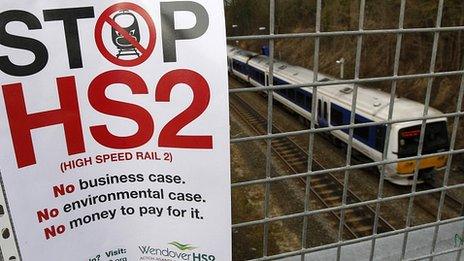HS2: High-speed rail network gets go-ahead
- Published
The HS2 rail route from above
A £33bn high-speed rail network has been given the go-ahead by the government, despite strong opposition.
Phase one of HS2, between London and Birmingham, should be running by 2026, later extending to northern England.
Transport Secretary Justine Greening has announced extra tunnelling along the 140-mile (225km) first phase, external in response to environmental concerns.
She said it would create "jobs, growth and prosperity", but critics dispute projected benefits of up to £47bn.
Ms Greening called the line "the most significant transport infrastructure project since the building of the motorways".
The London to Birmingham link would be followed by a second phase of the Y-shaped route reaching Manchester and Leeds by about 2033, she said
A consultation on the second phase will begin in early 2014, with a final route chosen by the end of that year.
Travelling at speeds of up to 250mph, passengers will be able to commute from Birmingham to London in 49 minutes, reducing the journey time by almost half from one hour and 24 minutes.
A Birmingham to Leeds journey will be reduced from two hours to 57 minutes and a Manchester to London journey from two hours and eight minutes to one hour and eight minutes.
Connections to existing lines should then cut journey times between London, and Edinburgh and Glasgow, to three-and-a-half hours.
The first phase of HS2 will include a connection to mainland Europe via the Channel Tunnel. On completion of HS2 the network will include a direct link to Heathrow.
"By following in the footsteps of the 19th Century railway pioneers, the government is signalling its commitment to providing 21st Century infrastructure and connections - laying the groundwork for long-term, sustainable economic growth," said Ms Greening.
The government estimates that the project could eventually result in 9 million road journeys and 4.5 million journeys by plane instead being taken by train every year.
"HS2 is therefore an important part of transport's low-carbon future," Ms Greening said.
There had been almost 55,000 responses to the consultation process on the project, which clearly "generates strong feelings, both in favour and against the scheme", the minister said.
She pledged a commitment to "developing a network with the lowest feasible impacts on local communities and the natural environment".
"I have been mindful that we must safeguard the natural environment as far as possible, both for the benefit of those enjoying our beautiful countryside today and for future generations."
Revisions to the route had halved the number of homes at risk, as well as reducing by a third the number due to experience increased noise, she said.
The route's key sticking points
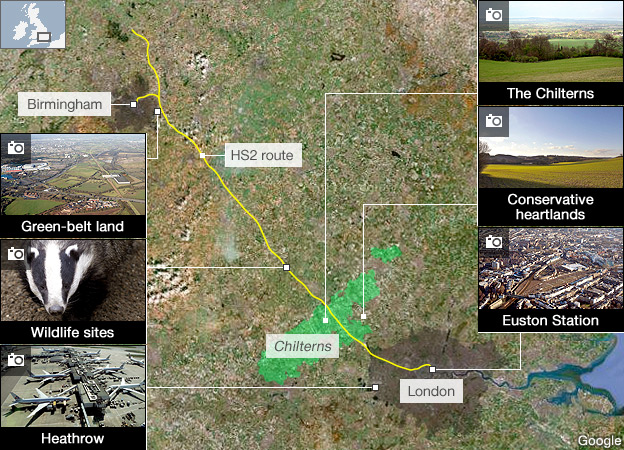
Green-belt land
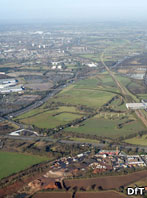
The planned route encroaches on green-belt land in a number of areas, including around London and Birmingham.
The Campaign to Protect Rural England argues plans for new out-of-town parkway stations would have a "devastating" effect on green belt and that the economic benefits would be a fraction of those that would be achieved from town centre stations.
The campaign group wants, in particular, changes to the proposed Birmingham interchange station, which it says will "encroach into the green belt next to Birmingham Airport".
Wildlife sites

County wildlife trusts are concerned the proposed route will pose a threat to wildlife. They estimate more than 150 nature sites could be affected, including 10 Sites of Special Scientific Interest (SSSIs).
Four nature reserves will be directly impacted, they say. They are Finemere Wood Nature Reserve and the Calvert Jubilee Nature Reserve, managed by the Berks, Bucks and Oxon Wildlife Trust, Broadwater Lake Nature Reserve, managed by Herts and Middlesex Wildlife Trust, and Park Hall Nature Reserve, managed by the Wildlife Trust for Birmingham and the Black Country.
The government has said that extra tunnelling and route amendments mean that the impact of more than half the route will now be mitigated. However, the wildlife trusts say this could actually make the damage to wildlife worse.
Heathrow
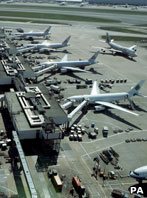
The second phase of the government's plans include a possible future spur to Heathrow Airport in west London.
The HS2 line from London to Birmingham is expected to open in 2026, followed in 2032-33 by high speed links to Manchester, Leeds and Heathrow.
However, in November, the Commons Transport Committee said a case for routing HS2 via Heathrow had not been set out clearly and needed further analysis.
Labour, which supports HS2, has suggested the first phase main route should actually travel via Heathrow, creating a hub at the airport and thus making it easier for travellers from south-west England to get on fast trains to the north. It would also protect the most sensitive parts of the Chilterns, the party says.
The Chilterns
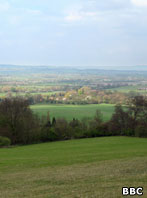
The proposed HS2 line crosses the Chilterns area of outstanding natural beauty (AONB). Environmental and local campaigners say the picturesque landscape will change forever if plans are approved.
The government was due to make an announcement on HS2 in December, but delayed it to incorporate miles of extra tunnelling to try to appease opponents. It has added 7.5 miles of tunnelling and 3.5 miles of deep cuttings along the 13 miles of proposed line through the Chilterns AONB.
The Campaign to Protect Rural England has said additional tunnelling would be "essential" if HS2 is to be built through the area.
Conservative heartlands
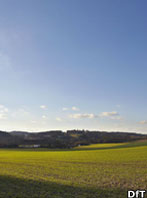
A number of Conservative MPs have expressed concerns about the rail link, which passes through Tory heartlands. Welsh Secretary Cheryl Gillan has been one of the most vocal Conservative critics and says she is prepared to resign over the project that cuts through her Chesham and Amersham constituency.
Dan Byles, Conservative MP for North Warwickshire and Bedworth, and Andrea Leadsom, Conservative MP for South Northamptonshire, have also voiced concerns.
To try to win over critics, ministers have added a overall total of eight miles of tunnelling along the route - mostly in the Chilterns. The changes include extended tunnelling near Amersham, in Mrs Gillan's constituency, near Ruislip in north-west London, Turweston and Wendover in Buckinghamshire, Greatworth, Chipping Warden and Aston le Walls in Northamptonshire, and Long Itchington Wood in Warwickshire.
Euston station
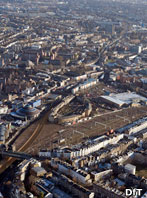
Campaigners fear the planned remodelling of Euston Station will lead to disruption that could last for many years.
Last year, a study from The TaxPayers' Alliance said passengers would face slower and less-frequent services if the scheme went ahead. Creating the London to Birmingham HS2 would mean Euston station in London "becoming a building site for seven years", it said.
Labour's Frank Dobson, MP for Holborn and St Pancras, told MPs the station was already overcrowded and lacked the infrastructure in surrounding streets to be the terminus for a high-speed rail link. The proposals would also mean the demolition of the homes of more than 350 of his constituents, he said.
The government has said its revised route halves the number of homes affected.
Changes to the plans, Ms Greening said, also meant that "more than half the route will now be mitigated by tunnel or cutting", including:
A longer tunnel through the Chiltern Hills from Little Missenden, Buckinghamshire, to the M25
A new 2.75-mile (4km) tunnel to avoid impacts on communities in Ruislip, north-west London
A longer covered cutting, known as a green tunnel, past Chipping Warden and Aston le Walls in Northamptonshire
A curve in the route to avoid heritage sites around Edgcote, Northants
Longer green tunnels at Wendover and South Heath, Bucks
The Department for Transport said that 22.5 miles of the first phase would now be enclosed in tunnels or green tunnels - up from 14.5 miles for the route that went to consultation - and a further 56.5 miles of cuttings would significantly reduce "visual and noise impact".
A green tunnel is essentially a deep cutting with a tube put into it, over which grass, trees and soil are placed. It is not as deep as a normal tunnel, and it is much cheaper to construct.
Conservative MP for Chesham and Amersham, Cheryl Gillan, who had threatened to quit over HS2, welcomed the proposed changes to the project.
"I have arranged to meet with the transport secretary to ensure that any ultimate decisions on the project and on any route do as little damage as possible to our environment and our local communities," she said in a statement.
A parliamentary vote on the scheme is not likely until 2013 or 2014, but the government is likely to win any vote as the line is backed by the opposition Labour party, which first proposed the project before it was ousted from power last year.
"We hope that the government will today set out a greater commitment than it has done so far to take the route of the new high speed line all the way to the north of England," said shadow transport minister John Woodcock.
'Wealthy few'
Justine Greening says HS2 "will support jobs, growth and prosperity for Britain in the future"
Protest groups formed to oppose the scheme say the planned route crosses an area of outstanding natural beauty and it will damage the environment.
Adam Thomas, whose home in the Chiltern hills will make way for the rail route, said: "We're going to lose our home which we've spent so long building for ourselves. But I feel more sorry in a way for the country because it's such a colossal waste of money and it is genuinely is not needed."
Opponents have also challenged the government's economic argument, suggesting the costs will be greater while the economic benefits will be lower than forecast, and that the business case for HS2 is based on an overly-optimistic prediction of growth in demand for long-distance train travel.
"There is no business case, no environmental case and there is no money to pay for it," said Stop HS2 campaign co-ordinator Joe Rukin.
"It's a white elephant of monumental proportions and you could deliver more benefits to more people more quickly for less money by investing in the current rail infrastructure."
Craig Bennett, director of policy and campaigns at Friends of the Earth, said: "We need to revolutionise travel away from roads and planes, but pumping £32bn into high-speed travel for the wealthy few while ordinary commuters suffer is not the answer.
"High-speed rail has a role to play in developing a greener, faster transport system, but current plans won't do enough to cut emissions overall - ministers should prioritise spending on improving local train and bus services instead."
However, the plan would be welcomed by "businesses up and down the country", said John Longworth, director general of the British Chambers of Commerce.
"Britain cannot continue to 'make do and mend' when it comes to its substandard infrastructure. Fundamentally, our global competitiveness is at stake," he said.
Stephen Joseph, chief executive of Campaign for Better Transport, said: "We're pleased to see the government investing in rail, rather than roads and aviation, and acting on some of the local environmental concerns surrounding HS2."
Chairman of Action Groups Against High Speed Two, Jerry Marshall: "The case doesn't stack up ... there are better alternatives"
But he went on: "The process for deciding on the London-Birmingham part of HS2 has been too narrow and people feel left out.
"In consulting on the lines north of Birmingham, the government needs to involve people earlier with greater discussion of alternative options, including ways rail investment can support low-carbon growth in the communities served, and also how any new lines will integrate with existing networks and improve local as well as long-distance transport."
- Published10 January 2012
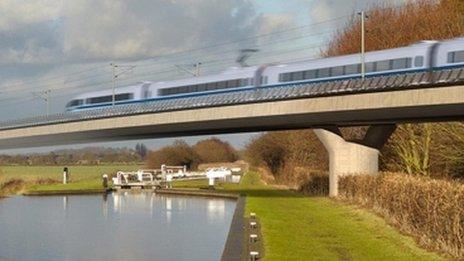
- Published10 January 2012
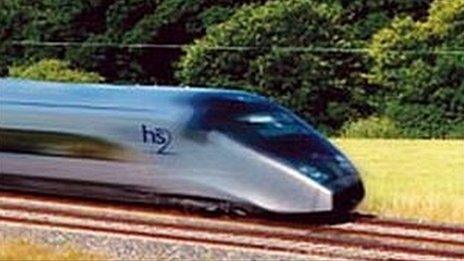
- Published6 October 2023
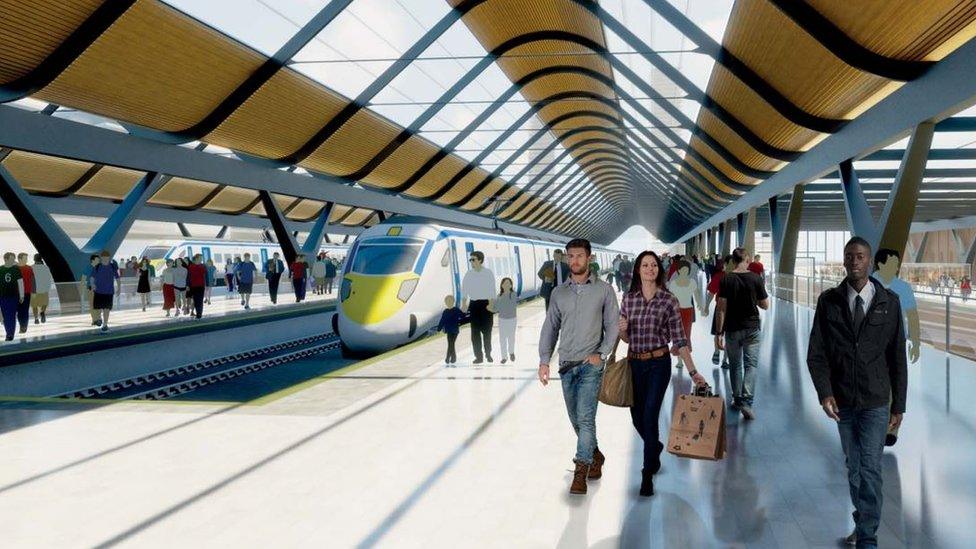
- Published10 January 2012
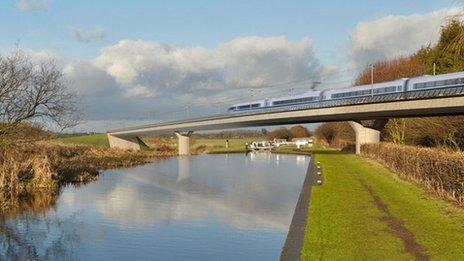
- Published10 January 2012

- Published10 January 2012

- Published10 January 2012

- Published10 January 2012
